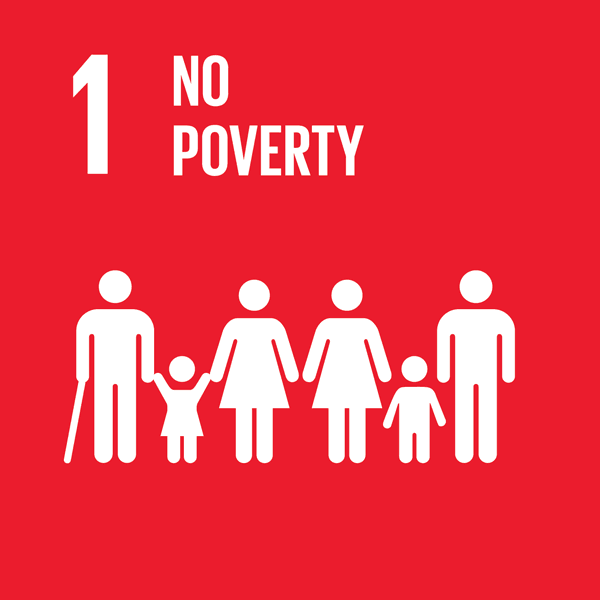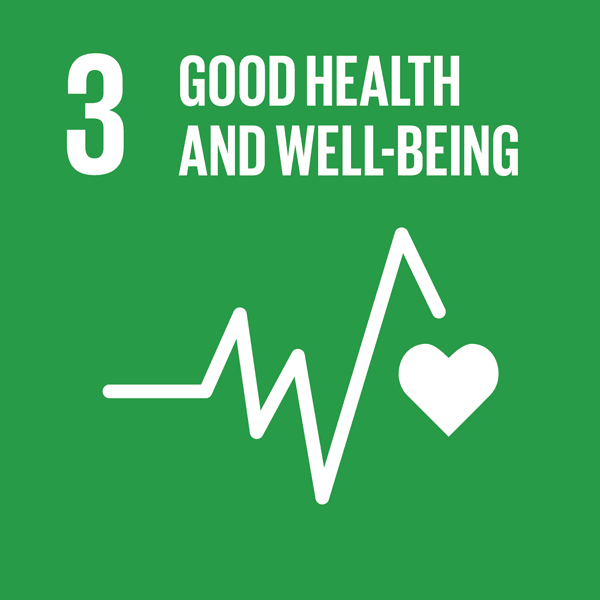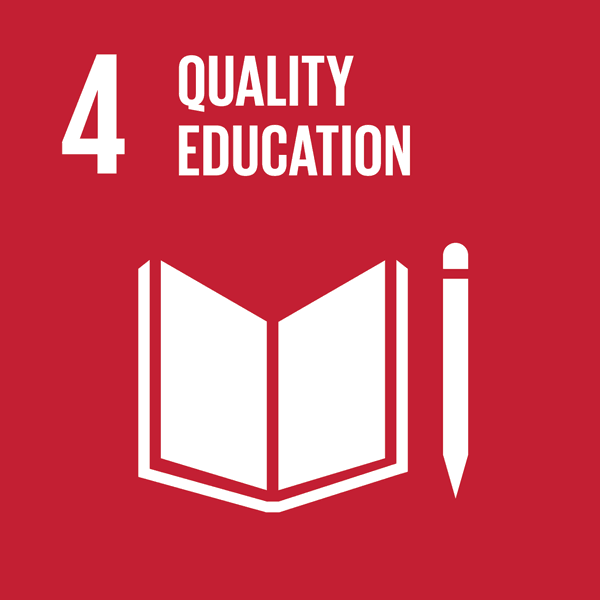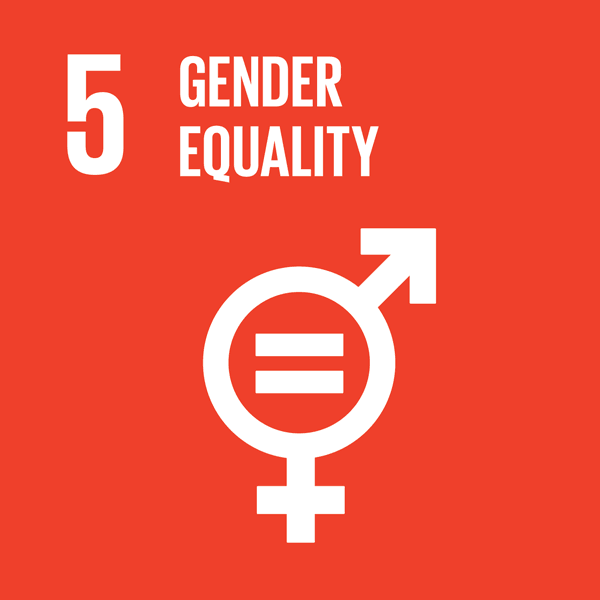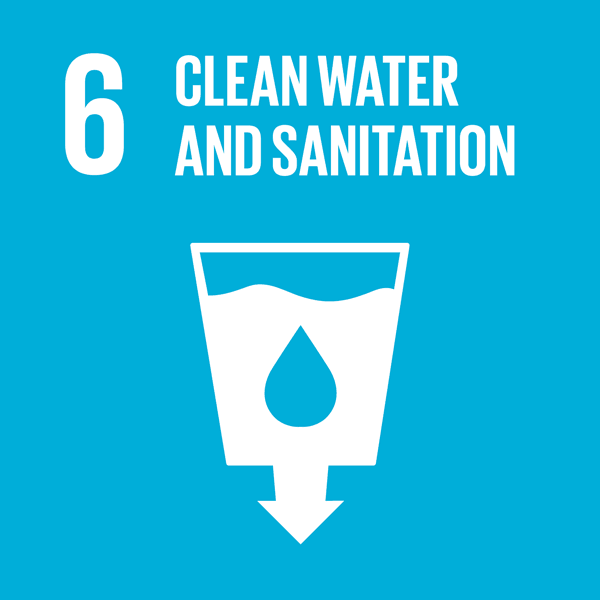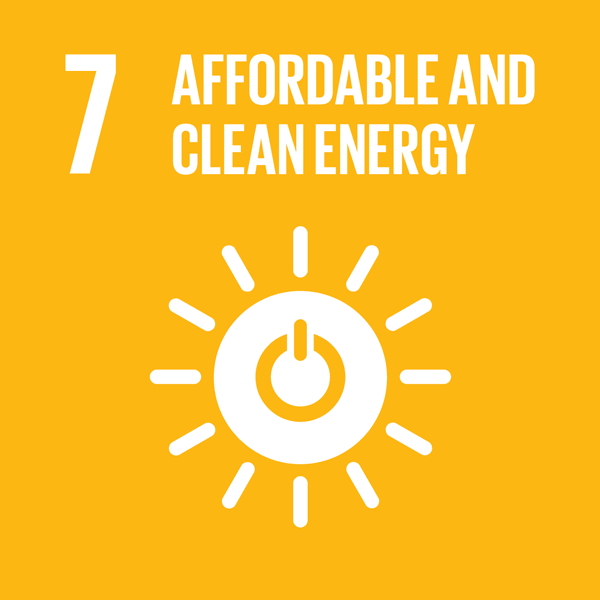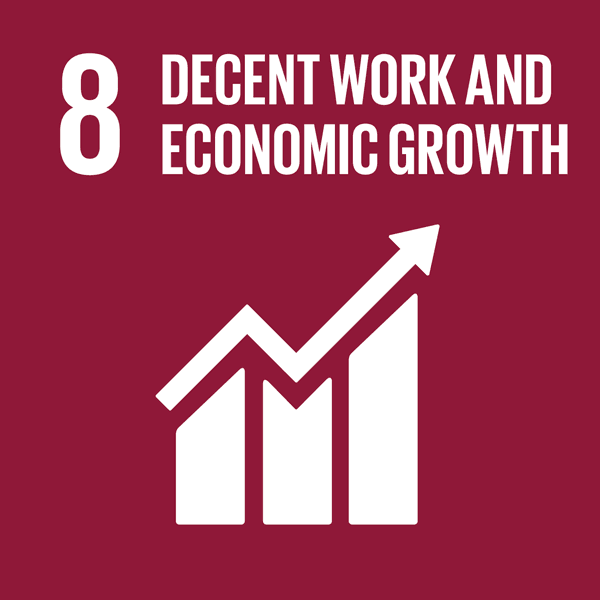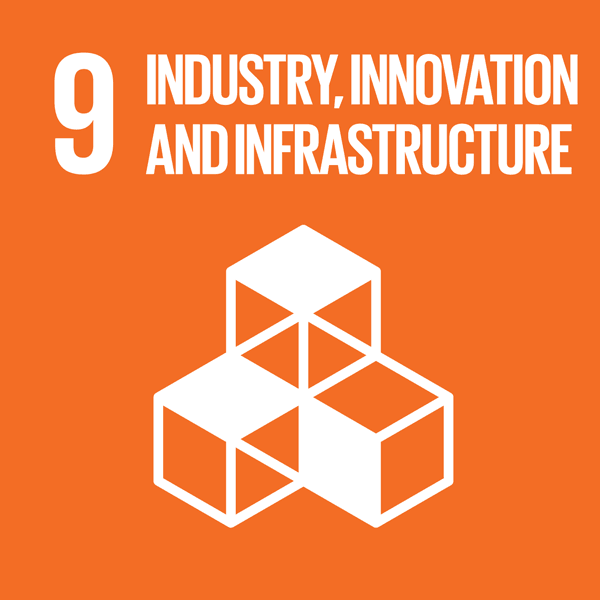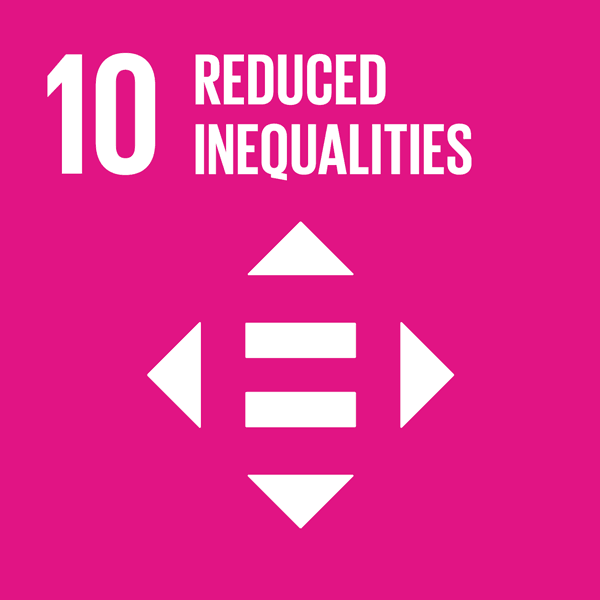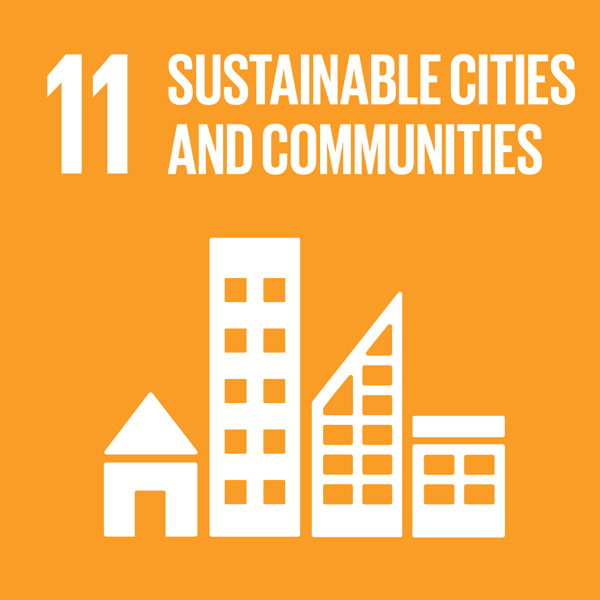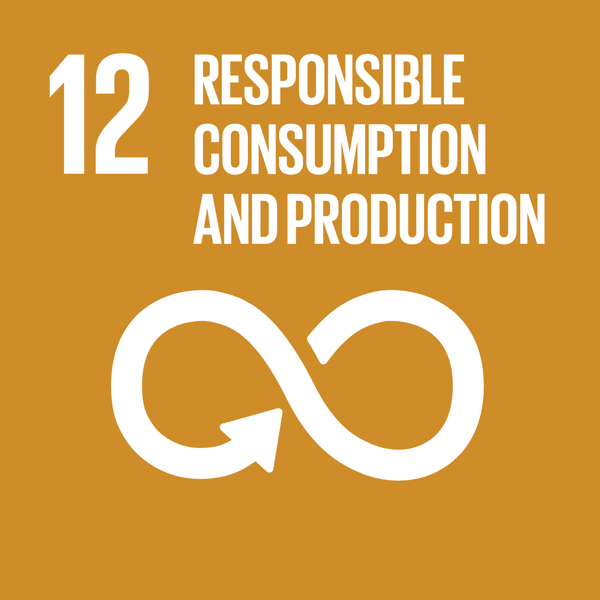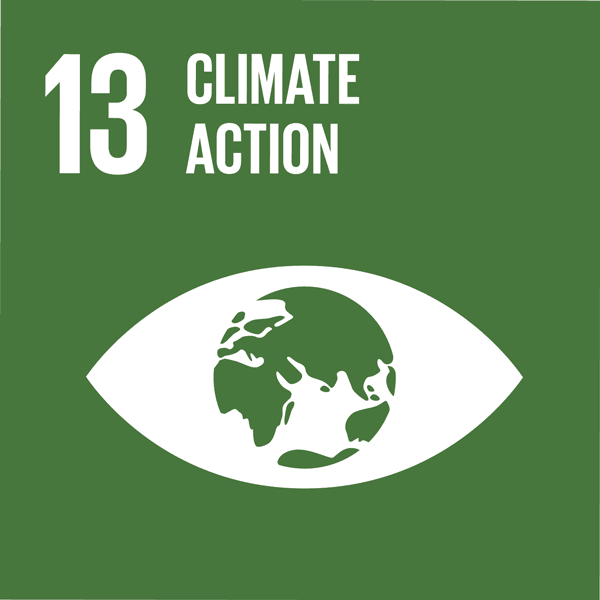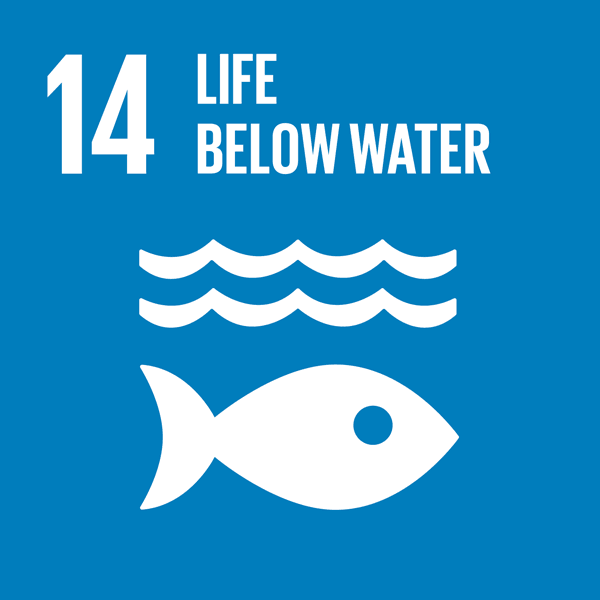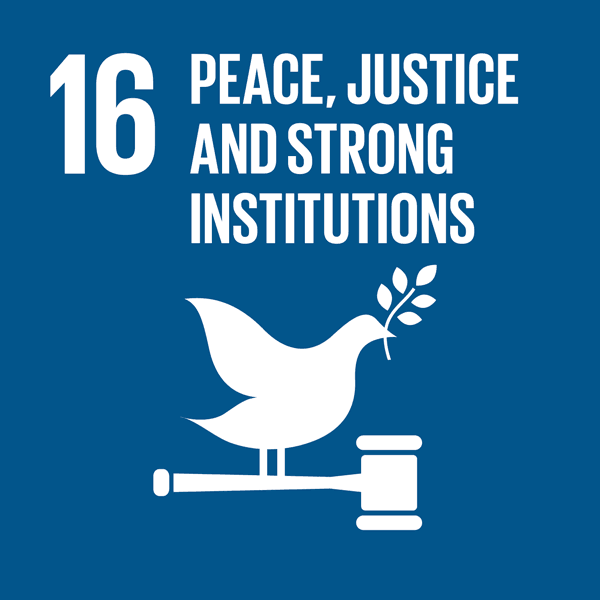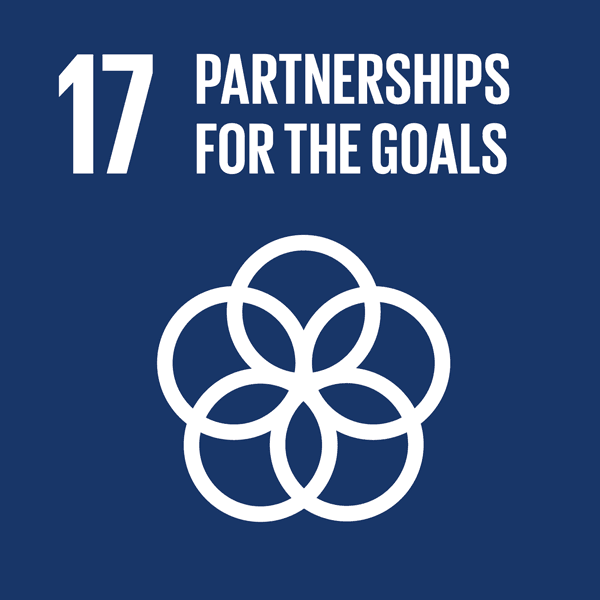
2020 in review
2020 was a year that saw us finalize the strategy that will guide us to the end of the next decade. At the same time, we adapted to unexpected challenges and are continuing to shape our organization to a fast-changing world.
When global events challenged the status quo, we maintained focus on our members and brought the reassurance of ISO standards to millions of businesses and individuals around the world. In 2020, we responded to the challenges in ways that will underpin global efforts to maintain improvements in quality of life and support economies and people’s livelihoods around the word.
More than ever, we’re part of building a more resilient, more equitable world.
We overcame unprecedented challenges, maintaining our momentum, finalizing our strategy and standing with our members, united in the face of a global pandemic.
Message from the ISO Secretary-General
Emerging together with a clear strategy
2020 has been a year of unexpected and unprecedented challenges.
The last year has been one of unexpected and unprecedented challenges. For everyone, in every region, the COVID-19 pandemic has impacted almost every aspect of our daily lives. In this challenging context, our organization has responded very quickly, adjusting plans, processes and priorities. These were testing times, and together we have done much more than just “getting through”. We have demonstrated incredible resilience and that is why I am very proud of our performance in 2020 and this year so far.
In our organization and elsewhere in institutions, businesses and homes, personal lives and values have been tested. The pandemic has brought uncertainty to all of us, regardless of our talents and previous performance. But it has also given us cause to be hopeful. Under tough conditions we have been reminded of our strengths: our adaptability, our resilience, and above all our community. We believe in making life better for people, and that requires both conviction and hope. The way in which the standards community rallied itself and gave support to others is a testament to these qualities, which are so integral to the ISO family.
While none of us saw it coming, all of us were affected: 2020 was a year of unforeseen challenges with a global pandemic that continues to impact the lives of billions. ISO is a truly international organization, with members in 165 countries, and whilst response to the pandemic varied according to national strategies, our organization stood unified by the same idea that has been at the centre of our standards family for more than 70 years: I’d like to thank each and every one of you, our members, for making ISO what it is: a global family committed to making people’s lives easier, safer and better.
When governments, businesses, organizations and individuals found themselves facing many uncertainties and tough questions, we provided reassurance and clear answers through International Standards. As a result of your active participation and hard work, we also have a clear strategy that will carry us to the year 2030. This document is a stepping stone on our journey to future success and setting this in place during volatile and unexpected times is proof of our flexibility, our willingness and our persistence.
It is thanks to our members that we are now set to start implementing our new ISO Strategy in 2021, which is being closely monitored through a measurement framework and a rolling implementation plan. I want to use this opportunity to extend my thanks to our global members for their tireless work in seeing the development of our new Strategy through to the end and, in doing so, setting us at the beginning of an exciting journey.
ISO’s COVID Response
Through flexibility, our commitment to innovation, online collaboration and lots of virtual meetings, we’ve stayed on course.
An International organization responding to a global crisis
When the COVID-19 crisis erupted, we supported our members in finding ways to bring answers through standards. Through the rapid establishment of a COVID newsroom, we brought up-to-date resources and news, including essential standards that were made freely available, and guidelines developed to respond to unique national situations. International Standards not only address immediate health concerns, such as the quality of medical equipment and biohazards, but also issues of crisis management and resilience.
COVID Newsroom
A compilation of ISO resources to support global efforts in dealing with the COVID-19 crisis.
It was essential that 2020 would not slow our programme of standards development. And, in fact, with ISO’s origins as an organization founded at a time of rebuilding, there is a stronger need than ever for International Standards. Through flexibility, our commitment to innovation, online collaboration and lots of virtual meetings, we’ve stayed on course. You can visit the COVID newsroom to find out more about what we did in 2020, and how we’re continuing to help beat the global pandemic.
New committees, work programmes and guidance in response to COVID-19
As one of the most rapid ways to get internationally agreed guidance into the hands of the businesses and organizations that most need it, ISO International Workshop Agreements (IWA) have a key role to play in fighting the ongoing pandemic. In 2020, we began work on guidelines for the construction of emergency medical facilities, as well as guidelines for contactless deliveries and cloud kitchen services.
Proposals to extend the work of existing technical committees included Tourism – Measures to prevent the spread of coronavirus (TC 228), Facility management – Guidance on emergency management of epidemic prevention in the workplace (TC 267), Food security – Guide for emergency or crisis situations (TC 34), Healthcare organization management – Drive-through infectious disease screening (TC 304), and Occupational health and safety management – General guidelines on managing safe working during a pandemic (TC 283).
COVID Members Page
National resources developed by ISO members to support the fight against COVID-19.
In addition to the expansion of these work programmes, 2020 also saw the creation of a number of new technical committees.
In responding to the challenge of continuing “business as usual” under the most unusual circumstances, we’d like to recognize the flexibility and willingness of our members.
ISO Virtual Meeting 2020
2020 saw lockdowns and travel restrictions implemented across the world in an effort to control the COVID-19 pandemic.
This mean that eagerly anticipated events had to be postponed or cancelled, from music festivals to international sporting competitions. It also meant that our ISO Week, which is usually a multi-day meeting that brings together our global members and incorporates our General Assembly, was also adapted to a new online format.
This was yet another example of how our way of doing things was challenged, and to which we responded with agility and an innovative approach built on digital technology underpinned by ISO standards. ISO’s statutory affairs were dealt with through a series of meetings that were repeated at staggered intervals to enable maximum participation from our global membership.
In responding to the challenge of continuing “business as usual” under the most unusual circumstances, we’d like to recognize the flexibility and willingness of our members. It was in large part thanks to their resilience and their can-do attitude that we made 2020’s meeting one of the most widely attended in our history.
Lawrence D. Eicher (LDE) Award announced online
With some 29 million tonnes of rubber consumed around the world each year, the multibillion-dollar rubber industry touches all of us, everywhere. In 2020, the ISO committee of experts that develops hundreds of standards for rubber won the Lawrence D. Eicher (LDE) Award, one of ISO’s highest distinctions.
Producing standards for one of the oldest industrial materials still in common use, ISO/TC 45 on rubber and rubber products demonstrates the commitment to continuous innovation that typifies ISO’s work and the application of established ideas to new and exciting areas. It’s the kind of flexible thinking that will play an essential part in helping us all to bounce back and rebuild a more resilient post-COVID world.

Our performance
2020 saw us maintain progress in the development and delivery of new standards, as well as the expansion of our work programmes into new areas, including those that support the global fight against COVID-19.
We stand together with organizations that maintain that biodiversity considerations should be central when it comes to rebuilding a better post-COVID world.
Overview
In this section, you’ll be able to see an overview of our financial performance, which saw spending in line with our plans and stable revenues in line with our forecasts as a result of detailed planning and careful management.
We stand together with organizations that maintain that biodiversity considerations should be central when it comes to rebuilding a better post-COVID world. It’s an ambition that will be supported by the work of the ISO technical committee (TC) dedicated to biodiversity. At the same time, the prevention of future outbreaks of viral infections should be assisted by the creation of a new TC that will focus on surfaces with antimicrobial properties.
A host of new committees were created in 2020
These include two technical committees that will create standards for stone (both natural stone, such as used for monuments and construction, and the engineered stone that’s often used for counter tops or wall coverings), a committee that will standardize security equipment for financial institutions and commercial organizations, and a project committee (a temporary committee with a highly focused remit) that will create guidelines that aid investigations to contribute to consumer safety. Browse the list to discover our new committees in greater detail and get an overview of their upcoming projects.
New Committees
-
Natural stones
-
Engineered stones
-
Consumer incident investigation guideline
-
Surfaces with biocidal and antimicrobial properties
-
Security equipment for financial institutions and commercial organizations
-
Lithium
-
Reference materials
International Standards and standards-type documents.
International Standards and standards-type documents.
work items were on the programme of the technical committees.
new work items.
technical bodies in order to ensure that ISO standards cover almost every subject imaginable.
new committees to create standards in new areas.

Our highlights
We know where we need to go, but it’s a long journey. Our Strategy roadmap is integral to keeping us on track towards an ambitious 2030 target.
More than 20 million people come to ISO.org each year. Here are the standards that were the most visited in 2020.
Our standards highlights
We published more than 1600 standards in 2020. All of our deliverables are developed in response to a demand from industry and society, meaning that every standard has a role to play in addressing real-world challenges. That makes each as important as the next. So while we can’t rank them, we’ve highlighted those new standards that were most frequently consulted by the people who use ISO standards.

Guidance for information security management systems auditors just updated
We reduced the risk of information security breaches and cyber-attacks in a year of unprecedented digital growth with ISO/IEC 27007:2020.

Words to the wise on conformity assessment
We established a new standardized vocabulary across the conformity assessment community worldwide with ISO/IEC 17000:2020.

Safe, secure and private, whatever your business
We helped businesses and organizations to protect their information with the consistent, internationally recognized approach of ISO/IEC 27009:2020.

New Management System Standard for Oil and Gas published
We changed the way that supply chain risks and opportunities are managed in the petroleum, petrochemical and natural gas industries with ISO 29001:2020.

Practical tips for employee engagement
We provided new ways to engage people at work, enhancing their involvement and competencies with ISO 10018:2020.

Inspiring successful innovation
We enabled innovation management, supporting consistent communication about processes, achievements and learning paths with ISO 56000:2020.
6 000 additional International Standards were mapped to the UN SDGs in 2020.
ISO SDG mapping tool
The United Nations Sustainable Development Goals (SDGs) represent an ambitious plan to enhance peace and prosperity, eradicate poverty and protect the planet. They are recognized globally as essential to the future sustainability of our world and, as such, are an integral part of the ISO Strategy 2030.
One of the key means of tracking how our standards are contributing to the SDGs will be the continued expansion of the ISO SDG interactive tool, which identifies the ISO standards that make the most significant contribution to each SDG. In 2020, we marked the fifth anniversary of the SDGs with the addition of nearly 6 000 standards, including those from JTC 1, a technical committee run together with the IEC that is specialized in IT and related subjects.
Below you can see the number of ISO standards that apply to each SDG.

Our Finances
We’ve come through a challenging year thanks to the people who make the ISO system what it is. ISO has reinforced its commitments to invest in people, innovation and resilience in 2021.
Financial performance
| Revenue (kCHF) | 2020 | 2019 |
|---|---|---|
| Membership fees | 20 942 | 21 181 |
| Royalties received from members selling ISO standards | 12 417 | 12 924 |
| Revenue from members | 33 359 | 34 105 |
| Revenue – net sales | 6 444 | 6 592 |
| Funding of capacity building projects | 418 | 2 286 |
| Funding of ISO strategic projects | 112 | 273 |
| Funding of ISO projects | 530 | 2 559 |
| Financial revenue (loss) | 159 | (99) |
| Total | 40 492 | 43 157 |
| Expenditure (kCHF) | 2020 | 2019 |
|---|---|---|
| Operations | 35 001 | 36 475 |
| Capacity building projects | 418 | 2 286 |
| ISO strategic projects | 112 | 273 |
| ISO projects | 530 | 2 559 |
| Amortization of fixed assets | 251 | 268 |
| Total | 35 782 | 39 302 |
→ 2020 operating result before allocation to funds: 4 710 kCHF
Balance sheets as of 31 December
Assets
| Current (kCHF) | 2020 | 2019 |
|---|---|---|
| Cash and cash equivalents | 18 480 | 15 646 |
| Receivables, prepaid expenses and accrued income | 3 746 | 3 877 |
| Total | 22 226 | 19 523 |
| Non-Current (kCHF) | 2020 | 2019 |
|---|---|---|
| Securities and investments | 17 571 | 17 262 |
| Rent guarantee for ISO Central Secretariat premises | 2 168 | 2 167 |
| Fixed assets | 214 | 448 |
| Total | 19 953 | 19 877 |
→ 2020 total assets: 42 179 kCHF
Liabilities
| Current (kCHF) | 2020 | 2019 |
|---|---|---|
| Suppliers and accrued liabilities | 2 967 | 3 448 |
| Members’ retrocessions | 4 146 | 4 185 |
| Revenue received in advance | 2 014 | 1 462 |
| Total | 9 127 | 9 095 |
| Funds (kCHF) | 2020 | 2019 |
|---|---|---|
| Restricted funds | 4 302 | 3 771 |
| Unrestricted funds | 24 040 | 22 679 |
| Operating results before allocation to funds | 4 710 | 3 855 |
| Total | 33 052 | 30 305 |
→ 2020 total liabilities: 42 179 kCHF
Summary of Cash Flow Statements
| Net cash (kCHF) | 2020 | 2019 |
|---|---|---|
| Net cash from (used in) operating activities | 2 620 | (104) |
| Net cash from (used in) capacity building projects | 275 | (1 378) |
| Net cash used in investing activities | (61) | (17 516) |
| Net increase (decrease) in cash and cash equivalents | 2 834 | (18 998) |
| Control (kCHF) | 2020 | 2019 |
|---|---|---|
| Cash and cash equivalents at the beginning of the period | 15 646 | 34 644 |
| Cash and cash equivalents at the end of the period | 18 480 | 15 646 |
| Increase (decrease) | 2 834 | (18 998) |

Our Members
Capacity building is a key part of ISO’s approach to building a strong organization. The ISO Action Plan for developing countries was approved in 2020 and sets out the ways in which we will support and strengthen our members.
We are first and foremost a members organization: a global family representing more than 160 national standards bodies.
Members calling campaign
Unification and strengthening in turbulent times
Over the course of a destabilizing year, we doubled up on commitments to understand and support our members. We undertook an initiative to speak with each of our ISO members, to check in and find out how the COVID crisis is impacting their operations. Our aim was also to provide reassurance through listening in person to their challenges and identifying how we can better support them in tough times. Through the project, we took the opportunity to strengthen bonds with all of our members, with particular emphasis on those we are not able to engage with as much as we would like.
This has helped open and maintain important lines of communication. In our conversations with you, we covered everything from your experiences with COVID-19, your opinion of the initiative to provide COVID-relevant ISO standards for free, what you think of our IT services, your capacity building needs, gender activities, and your engagement with stakeholders. We are pleased that the conversations have been rewarding for all concerned and we thank you for taking the time to speak to us and provide us with valuable feedback.
2020 further highlighted the importance of offering flexible online solutions.
Digital learning platform
We launched the new ISO digital learning platform, developed in record time to deliver remote-training opportunities as the COVID crisis continues. The first release of content includes the ISO eLearning course on project management for committee managers and support teams, together with a selection of ISO microlearning videos.
This offering will be expanded throughout the current year with various courses ranging from how to develop International Standards to good standardization practices, as well as business competencies related to international standards development. As the platform grows, this exciting knowledge hub will allow your staff and national stakeholders to benefit from our standardization learning offer. Courses can be taken at your own pace, from anywhere in the world. Future platform developments will facilitate exchange experiences with fellow learners in dedicated forums.
Successful collaboration at ISO begins with open and constructive dialogue.
Member Dialogues: Ready for new. Now.
To help prepare our members and our organization to better respond to new challenges we ran a series of interactive sessions with our members: member dialogues. The sessions provide a collaborative way to dive deeper into key topics and to share standardization experiences. The series of webinars were themed around the following topics:
- Meeting user needs: What customers really want and how to find out
- Taking action on gender: Success stories from the standards community
- Agility in crisis: Delivering fast and effective solutions during the pandemic
We are international. It’s in our name, and it’s in our DNA.
Regional engagement strategy
As a truly global organization, we’re committed to providing dedicated, sustainable and tailor-made support to all ISO members. We created a strategy with the express purpose of enhancing engagement with the regional and sub-regional standards organizations and committed to fostering a strategic partnership approach with these organizations. The ISO Council also approved a series of recommendations for implementation of the regional engagement strategy.

Our Partnerships
We believe in the benefits of multilateralism and partnerships for maximum impact. Working with others is the only way to get things done when it comes to solving the challenges we face in this countdown decade.
We overcame distances and travel restrictions through rapid transformation of our key meetings to a virtual setting.
PASC – Regional Meeting for Asia-Pacific
In common with most of our meetings in 2020, the Pacific Area Standards Congress (PASC) was entirely virtual.
Bringing together ISO, IEC and ITU-T, it was attended by both ISO Secretary-General Sergio Mujica and ISO President Eddy Njoroge, as well as the IEC General Secretary Philippe Metzger and Chaesub Lee, Director of the ITU Telecommunication Standardization Bureau.
The meeting reinforced coordination between the three organizations on standardization activities of mutual interest and, in particular, highlighted the work of the Standardization Programme Coordination Group (SPCG).
Each year on 14 October, the members of IEC, ISO and ITU celebrate the voluntary technical agreements that are published as International Standards.
World Standards Day 2020
Protecting the Planet with Standards
Each year, World Standards Day (WSD) celebrates the role of standards, and standardizers, and the unique ways in which they contribute to making lives easier, safer and better.
While progress during the last century has improved quality of life for billions, industrial activities have added to Earth’s natural greenhouse gases, contributing to climate change. As a countermeasure, and in response to rapid population growth, we need to make best use of our planet’s finite resources.
2020’s WSD directly addressed these issues under the theme “Protecting the Planet with Standards”. To reduce human impact on our planet, we need the political will, concrete action and the right tools. International standards are one such tool. The international standards prepared by IEC, ISO and ITU take into account tried and true solutions to technical challenges. They help share expertise and expert know-how broadly within developed and developing countries alike.
Standards cover all aspects of energy saving, water and air quality. They lay down standardized protocols and methods of measurement. Their broad use helps reduce the environmental impact of industrial production and processes, facilitates the reuse of limited resources and improves energy efficiency.

The winner of this year’s competition.
We’re helping enable a progression towards smart cities, where people, planet and technology coexist in harmony.
Kicking off the Joint Smart Cities Task Force
A new ISO, IEC and ITU task force dedicated to coordinating international standardization for smart cities sprang into action this year, with the COVID-19 crisis further highlighting the scale and urgency of the challenge.
Cities, municipalities and local governments are at the forefront of coping with this pandemic, and standards are an invaluable tool to support them. The IEC, ISO and ITU Smart Cities Task Force will reinforce the collaborative conversations that were initiated at the three World Smart City Forums held from 2016 to 2018.
It will also engage stakeholders to identify standardization needs and provide leadership in guiding the ongoing collaboration of the broader standardization ecosystem.

Our Initiatives
We are committed to creating a world where gender is no longer a barrier to opportunity. In 2020, we launched a new Gender Action Plan and surveyed our members to build a picture of women’s participation in standardization committees.
Get ready for the next step in standards. ISO standards, for the world of tomorrow.
Online standards authoring
Launched as a pilot with our members in 2020, the online standards authoring project aims at creating an online environment for standards developers in which they can work efficiently and collaboratively, and lay the foundation for new value-added products and services for the world of tomorrow. At a later stage, it will also provide a superior commenting collation toolset and enriched online commenting for standards development purposes. The full-fledged FONTO editor is composed of three building blocks: standards authoring and commenting; member commenting; internal editing. The pilot, which launches in October, will focus on standards authoring and commenting features of the editor. Implementing one building block at a time allows the project team to achieve a more robust result, all while progressively onboarding the ISO community as and when appropriate and getting ready for their respective contribution to standards development work.
Coming soon: the awesome new OCA video from ISO due Q1 2021.
We’re constantly examining how and where standards are used and the many ways in which they are making lives easier, safer and better.
Research & innovation network
The ISO R&I team created a network to bring together ISO members, academic researchers, standards practitioners and all those with an interest in standards research. Launched in 2020, the network aims to become a place for discussion, information exchange and the sharing of ideas. You can find out more in the accompanying brochure and join us at research.iso.org.
Our organization is about ensuring that every voice is heard. Addressing inequalities and gender disparities is fundamental to that aim.
Mind the GAP
The ISO gender action plan goes live
We worked closely with our members and, following their inputs, we were proud to launch a new and comprehensive plan that will help move our organization forward, creating equality of opportunity and evolving towards a balanced organization where everyone’s voice is heard and listened to, whatever their gender, age, race or orientation.
Redressing the balance
In 2020, we launched a survey to help us understand how best to address gender awareness and representation across the many different cultures that make up our global family. This will be followed in 2021 by a full report on how to turn these numbers into meaningful action. In this Annual Report, we’ve presented the key findings.
With IEC, we also created a Joint Strategic Advisory Group (JSAG) on gender-responsive standards and made gender a central theme of our dialogues with members. As part of our ongoing work of mapping our entire catalogue of standards to the SDGs, we’re paying close attention to SDG 5 which relates to gender equality. To maintain our commitment to all voices being heard and achieving gender neutrality in standardization, we also launched the Gender Focal Point Network, an online space for advancing gender issues.
Gender Survey
One of the key steps outlined in our Gender Action Plan (GAP) is to collect data to better understand the nature and scale of the gender challenges that ISO faces.
We made a start in 2019 with an assessment of gender distribution among leaders of our member organizations. In 2020, we went one step further. Not only did we ask each of our members to report this data, we also looked at the gender balance of the independent technical experts that contribute to ISO standards.
We examined a number of factors, including balance by technical sector, geographical area and age, all of which will inform the application and evolution of our GAP. These will be made available in a special report following analysis by our gender team. Here, we have presented the preliminary findings. While the situation at ISO is more favourable for women than in the technical sector taken globally, we recognize that we still have a long way to go. By establishing benchmarks, we can continue to address gaps in a meaningful way.
Collect data on gender representation
- Collect data on gender representation at the following levels: NSB CEOs, technical committees (committee managers, chairs, convenors and experts) and ISO governance bodies.
Collect case studies and best practices on Standards in support of gender equality
- Collect case studies on national and international standards to define best practices on standards in support of gender equality.
- A repository of NSB Gender Action Plans and applicable policies and processes to support gender equality and women’s empowerment in standardization.
Assess the gender responsiveness of ISO Standards
- Improve understanding of the possible gender implications of selected ISO standards.
- Create tools to support the technical committees to ensure that the standards they develop/revise are gender-responsive.
Raise awareness of standards in support of gender equality and women’s empowerment
- Improve understanding and knowledge of standards in support of gender equality and the empowerment of women.
ISO’s policy on gender
- Define long-term objectives related to gender equality and women’s empowerment.
Stronger members mean a stronger organization. It’s really that simple.
Leadership Management Development
We run the ISO Leadership and Management Development (LMD) Programme with the aim of strengthening the skills of our member organizations. We believe that our organization is only as strong as its members, so in 2020, we continued this programme through a series of virtual workshops that focused on Americas and Caribbean members. As part of our activities that specifically strengthen member capacity, the ISO LMD Programme consisted of a series of virtual workshops structured around member needs. The initial sessions focused on members in Africa and Europe, with further sessions covering members in the Caribbean and North, South and Central America. The series will conclude this year with a focus on members in Asia and the Middle East.
Making life simpler through harmonized processes and shared tools. That’s the ISO way.
New platform for technical committee documents
We took a big step with our move to ISO Documents, which represents one of the pillars of the ISO standards development environment. Our transition to a new, forward-looking platform that is open, adaptable and robust is one more step towards reflecting industry trends and technology developments, ensuring ISO continues to attract cutting-edge standards developers now and in the future.
Despite exceptional worldwide circumstances, we have onboarded all technical committees and uploaded their documents to the new platform, which now hosts over one million documents and serves almost 60 000 users across 3 700 committees.
In 2021, policy development committees, governance groups, CEN and national committees will also be available from the new platform, consolidating the user experience of the ISO community even further.
We’re looking ahead, making sure that we’re ready for the unexpected and fit for the future.
Standardization foresight framework approved
The aim of the Standardization Foresight Framework is to create a new way to develop standards that better respond to upcoming situations and the way in which standards are used. Following approval of the Framework by the ISO Council, we ran a workshop to help our members prepare and get the most from this new initiative. Attended by almost 190 participants representing 32 ISO members and their stakeholders, this first edition was a success. A second workshop will be held in 2021.
We’re on a journey to spread the power of standards and address the world’s most pressing challenges. That means nobody gets left behind.
Taking action in developing countries
With developing countries making up 75 % of our global membership, ISO has a unique understanding of the issues they face. Through our capacity building programmes, we’re empowering people and putting standards at the centre of their sustainable development journey.
Our commitment is embodied in our ISO Action Plan for developing countries (APDC) which is our roadmap for delivering initiatives that are tailored to our members’ particular situations. In 2020, we finalized the APDC, a key document that distils our ambitions to strengthen our developing country members into workable actions and measurable progress. By encouraging participation in standardization and listening to every voice, we’re developing globally applicable solutions that help make life better for everyone, wherever they live, whatever the scale of their social, environmental and economic challenges.

Our Leadership
We are a solutions-focused organization, and that helped us come through 2020. Now we need to show that we’re also resilient, adapting to the challenges and opportunities of a post-COVID world.
Principal officers

Eddy Njoroge /2021
ISO President
Kenya
End of term of office is displayed after the name. Past principal officers of ISO is available as a PDF.
Message from the President
We came through a difficult year fully prepared to address the future and continue to adapt our organization to ongoing challenges through a strategy that gives us a clear direction to 2030.
A new strategy for a new era
While there are many valuable lessons learned along the way of the last year, foremost of these is that we cannot deal with global problems in isolation.
As a global community, the world’s standardizers were better prepared than most. For us, it has been a test of two things that are fundamental to ISO: the ability to work together in pursuit of shared goals, and the creation of documents, standards, that serve as a proven means of tackling real-world problems. If there were any who were not convinced about the benefits of a consensus-driven approach informed by expert opinion, the end of 2020 left no one in doubt. Beyond highlighting the value of our approach, we responded, together with our members, to make standards a central part of solving the problem. From the way we communicate in a locked-down world to the correct procedures for handling virus testing, to the standards that build confidence in protective equipment and medical devices, ISO delivered solutions, making many standards available free of charge.
For standards to continue playing their rightful role in the society, they must be developed to meet users’ needs. Sociocultural and economic changes do not only affect the industries, they also affect and disrupt the standards-setting arena. The advent of the fourth industrial revolution and the degree to which we all had to learn to work remotely has provoked a massive acceleration in an already fast-moving sector. The explosion of connected technology, much of it underpinned by International Standards, has led to serious discussions about the way that we work and interact as a society, and the way that we function as an international organization.
Standards-setting organizations, then, can not only rely on physical or paper-based standards but charter a new path in the area of machine-readable standards. As innovations such as artificial intelligence and big data help to power economic progress, national standards bodies must position themselves as agents of socio-economic and technological transformation. How we respond to these and other challenges of our time will determine the mark we, as one standardization family, leave on the world this century. At ISO, we have embarked on an exciting ten-year journey guided by the ISO Strategy 2030, mindful that we operate in a world where change is a constant and where challenges and disruptions can be truly of global scale.
We continue to support our members to strengthen our organization and further the participation that is central to meeting our own challenges and our responsibilities as the world’s foremost standards organization. The year was an accelerated stress test that allowed us to fine-tune and finalize our strategy.
We’ve come through tough times and we’re in good shape. Now, we are better prepared than ever to continue to meet the immediate challenges of getting global societies and economies back on track and playing a key role in maintaining the momentum towards long-term goals that must be realized, for the sake of our planet and the generations to come. The scale of the task is enormous, but I am inspired by the resilience, agility and relentless positivity of our organization. The challenges of 2020 may have rocked us all, but I am confident that we are standing stronger, ready to put our organization at the forefront of meeting the 2030 agenda.

